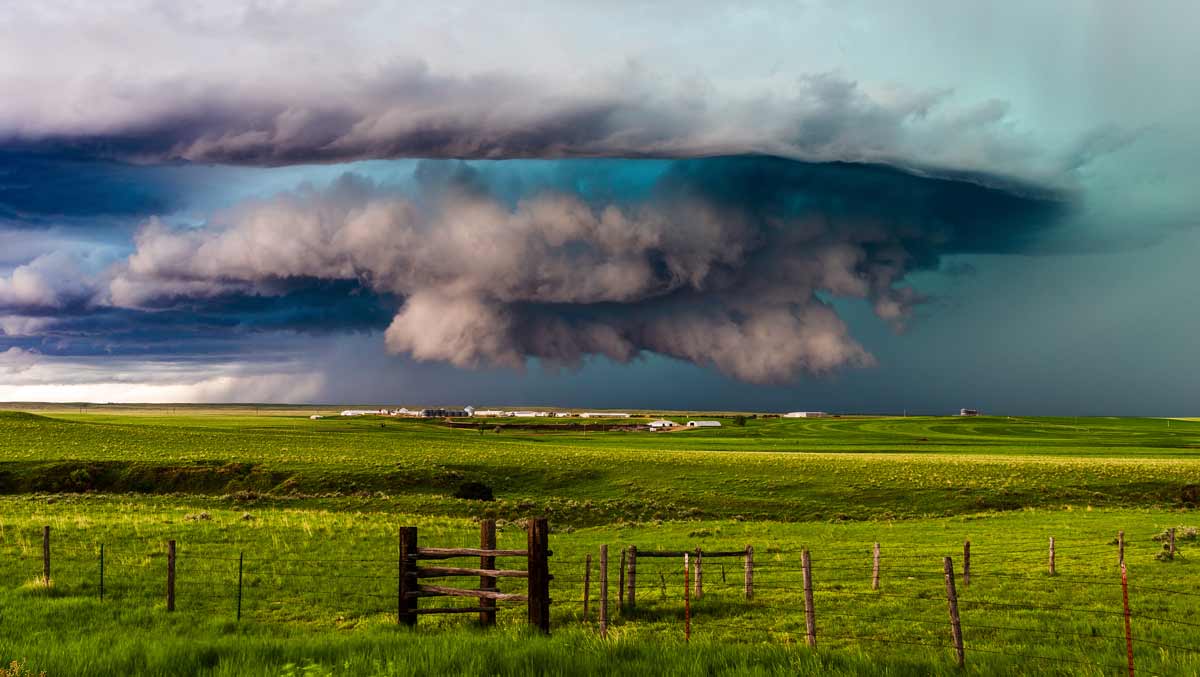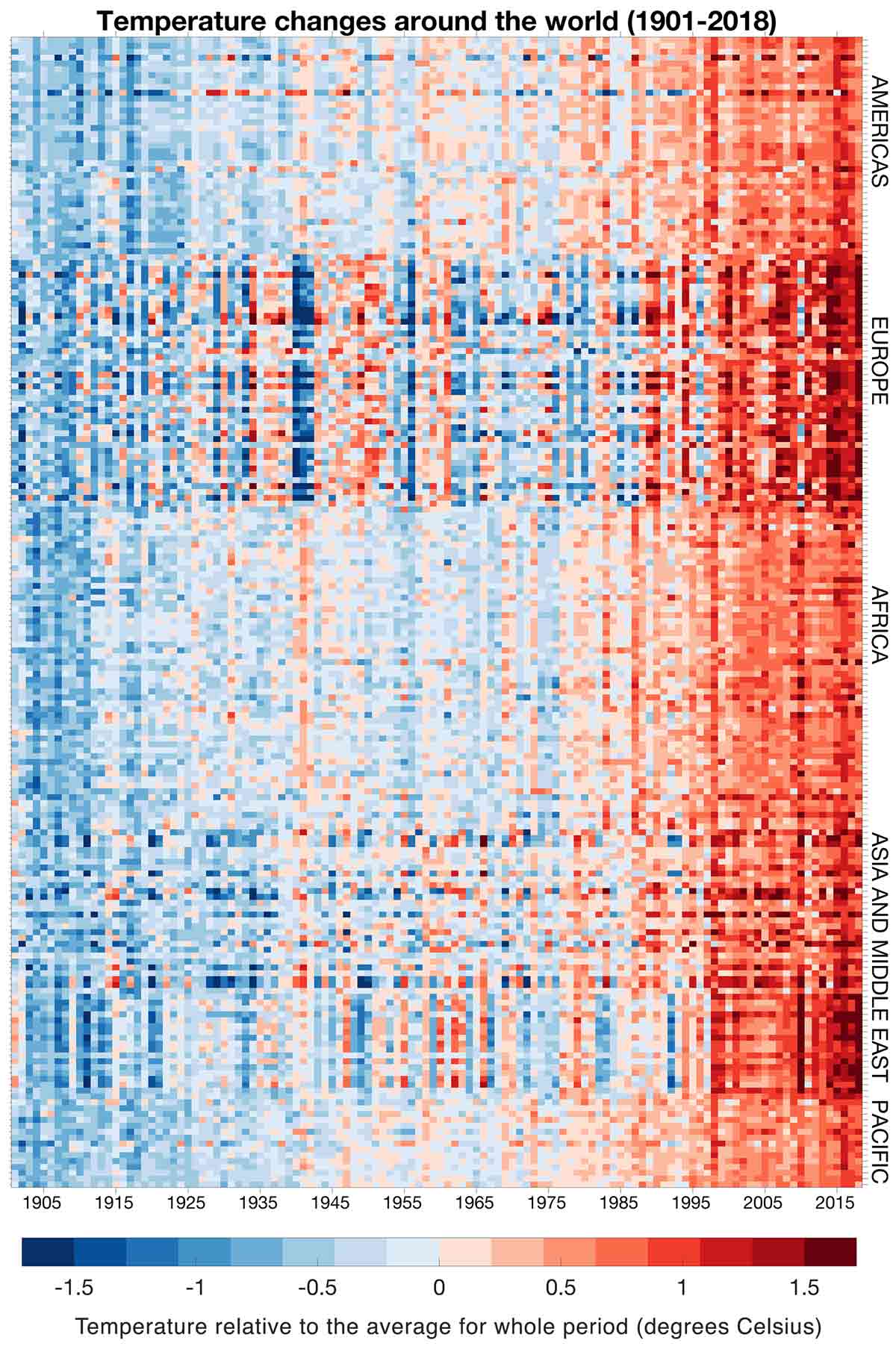


Select one of the options below:

Scientists have been studying the Earth’s powerful greenhouse effect for more than two centuries. As world-wide economic development caused large emissions of greenhouse gasses by the mid 20th century, scientists around 1970 began to study how these emissions would affect our climate. At the turn of the 21st century, a pronounced planetary warming trend was obvious. According to the National Aeronautics and Space Administration, “the current warming trend is of particular significance because most of it is extremely likely (greater than 95 percent probability) to be the result of human activity since the mid-20th century and proceeding at a rate that is unprecedented over decades to millennia.”
In order to address climate change at the local, regional, and global level, it is essential for citizens to educate themselves on the science of climate change. By learning more about the causes (including the strength of the evidence and overwhelming scientific consensus), impacts, and solutions to the problem, individuals can make informed choices regarding the personal and societal choices needed to stop climate change and adapt to the coming changes that cannot be stopped.
This six-course program from Colorado State University is designed to expand your understanding of climate change in an easy-to-follow, online format. Learn from home and on your schedule to gain new knowledge. This program is also an excellent option for K-12 teachers and other educators who want to expand their understanding of climate change in order to pass this knowledge on to students. Courses cover topics including:
Start learning today. No application required.
Register NowAccording to NASA, the terms ‘climate change’ and ‘global warming’ are frequently used interchangeably, but they have different meanings. Global warming is the observed increase in average temperatures globally over time. The visualization below, from BBC, illustrates average temperature changes in degrees Celsius from all major regions of the world between 1901 and 2018. The data was provided by Berkeley Earth and several national meteorological agencies.

Climate change can be defined as a shift in regional weather patterns and global climate taking place over an extended timeframe. According to the Union of Concerned Scientists, a nonprofit organization founded by scientists and students at MIT, greenhouse gases like carbon dioxide and methane accumulate in the earth’s atmosphere, allowing less heat to escape and increasing the planet’s average temperature over time, thus causing global changes in climate. As average temperatures rise and the global climate changes, heatwaves, melting ice caps, rising sea level, droughts, floods, increased risk of wildfires, and a higher likelihood of extreme weather events will occur in addition to many other climate-related problems. Today, many scientists prefer the term ‘climate change’ because it describes the nature of the problem more completely than ‘global warming.’
One reason why the topic of climate change remains contentious is because a significant portion of the energy being created and consumed around the world is still generated via fossil fuels. As of 2018, according to the U.S. Energy Information Administration, more than 60% of utility-scale electricity generated in the United States was from fossil fuels, despite large increases in non-greenhouse gas emitting energy sources in recent years.
Because the world’s largest economies, which include the U.S., China, and the European Union, are still largely dependent on fossil fuels — and because the costs and time needed to shift to non-carbon emitting sources of energy are very significant — progress to reduce greenhouse gas emissions has been slow. Indeed, in 2018 global emissions of greenhouse gasses increased significantly compared to 2017. The existing stock of fossil fuel-dependent infrastructure needed to generate electricity, transport people and goods, and heat buildings will need to be replaced in the 21st century. The good news is that prices of non-carbon emitting energy sources (e.g. solar, wind, and hydroelectric power) have been plummeting. Even with the best intentions and efforts, however, the shift to a world without greenhouse gas emissions will take decades to accomplish.
Many of the world’s most powerful corporations and some large governments (e.g., Russia and Saudi Arabia) are also disinclined to support meaningful action because they profit directly from the extraction, sale, and use of fossil fuels. Eight of the top ten largest companies in the world on the Fortune Global 500 List are either oil and gas companies or automotive manufacturers.
Ultimately, climate change is, and will continue to be, a major challenge because of the sheer scale of effort and financial investment required to reduce greenhouse gas emissions to zero: the ultimate solution to the problem. In addition to stopping greenhouse gas emissions, humans will also need to adapt to many new aspects of our changing climate in the future.
Although the scientific consensus on climate change has been overwhelming for nearly two decades, up until recently the public has been slow to acknowledge the threat. In just the last few years, driven in part by increasingly dire scientific reports and by extreme weather events (e.g., hurricanes Harvey and Maria, California’s Camp and Mendocino Fires, ubiquitous heat waves, floods like the 2019 Midwest spring flood, and droughts like the ongoing Colorado River drought), public concern has been growing. According to the Yale Program on Climate Change Communication, seven in ten Americans now think climate change is occurring, and at least six in ten Americans are at least somewhat worried about it.
In 2019, a new and primarily youth-driven movement of climate activism has begun to gain momentum in Europe, the United States, and other countries. According to Vox Media, on March 15, 2019, an estimated 1.4 million young people in more than 100 countries protested to demand stronger climate action by walking out of school. Inspired by Swedish climate activist Greta Thunberg, the school strike youth movement is now called “Fridays for Future.” Meanwhile, new activist groups like Extinction Rebellion have emerged and older organizations like the Sierra Club and the Natural Resources Defense Council continue to promote pro-environment and conservation-related causes.
Whether you’re just looking for science-based information about climate change or seeking to educate yourself in order to help make a greater impact, the Understanding Climate Change program is a great place to start. Visit the curriculum page to learn more about the individual courses.
Digital badges are visual representations of new knowledge you have gained. You earn badges each time you successfully complete one of CSU’s online digital badge courses. Take only the courses you want to take, and build your own unique set of credentials.
Courses in this program are self-paced. Study on your own schedule, and customize your learning experience to match your individual goals. Take all courses to earn your Mastery Badge, or take only the courses you're most interested in.